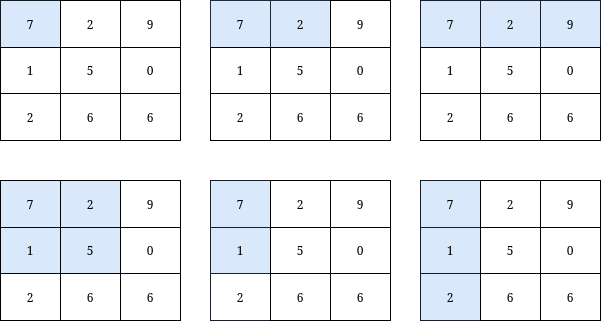Description
You are given a 0-indexed integer matrix grid and an integer k.
Return the number of
submatrices
that contain the top-left element of the grid, and have a sum less than or equal to k.
Example 1:

Input: grid = [[7,6,3],[6,6,1]], k = 18 Output: 4 Explanation: There are only 4 submatrices, shown in the image above, that contain the top-left element of grid, and have a sum less than or equal to 18.
Example 2:

Input: grid = [[7,2,9],[1,5,0],[2,6,6]], k = 20 Output: 6 Explanation: There are only 6 submatrices, shown in the image above, that contain the top-left element of grid, and have a sum less than or equal to 20.
Constraints:
m == grid.lengthn == grid[i].length1 <= n, m <= 10000 <= grid[i][j] <= 10001 <= k <= 109
Code
Time Complexity: , Space Complexity:
same as Number of Submatrices That Sum to Target.
class Solution {
public:
int countSubmatrices(vector<vector<int>>& grid, int k) {
int m = grid.size(), n = grid[0].size();
for(int i = 0; i < m; i++) {
for(int j = 1; j < n; j++) {
grid[i][j] += grid[i][j - 1];
}
}
int res = 0;
for(int i = 0; i < n; i++) {
int count = 0;
for(int j = 0; j < m; j++) {
count += grid[j][i];
if(count <= k)
res++;
}
}
return res;
}
};